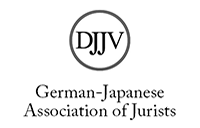A Japanese Response to the OECD’s Base Erosion and Profit Shifting Project
Focusing on its Status as a Jurisdiction Without a Statutory GAAR Provision
Abstract
This article is a summary of the Japanese discussion about the country’s international tax policy which the author presented to the Symposium. In Part 1 of this article, the author analyzes the background of the Japanese domestic legislative initiative for an anti-avoidance regime before and after the publication of the OECD’s Base Erosion and Profit Shifting (BEPS) project. As the effective rate of Japanese corporate income tax had been high compared with the average of the OECD countries, the BEPS risk is now perceived to be crucial to the Japanese economy. Thus, revisions to tax policy in recent years are a genuine reflection of the OECD’s recommendations, which include the Principal Purpose Test (PPT)[1] for cases of treaty abuse. However, as the PPT’s function in ignoring or restructuring taxpayers’ transactions can be assumed to be equivalent to that of a domestic General Anti-Avoidance Rule (GAAR),[2] it may look like a new measure in the Japanese tax law statutes to address abusive tax schemes. Then, in Part 2, the author turns to the legislative and judicial interpretative history of the fight against tax avoidance schemes in Japan, focusing on the statutory Specific Anti-Avoidance Rules (SAARs).
Finally, based upon these analyses, the author addresses some issues which are relevant to the implementation of BEPS recommendations, mainly concerning the PPT, and concludes with comments on the possibility of introducing a domestic GAAR in the future.
[1] The PPT was incorporated into the Multilateral Instrument (MLI) which Japan signed in 2017, for which it deposited the instrument of acceptance in 2018, and which will enter into force in 2019.
[2] In this article, an anti-avoidance provision through which the legislature delegates a broad power to tax authorities to deny or prohibit tax avoidance is referred to as a GAAR.






